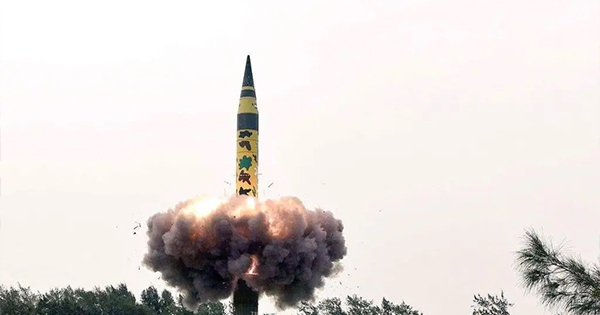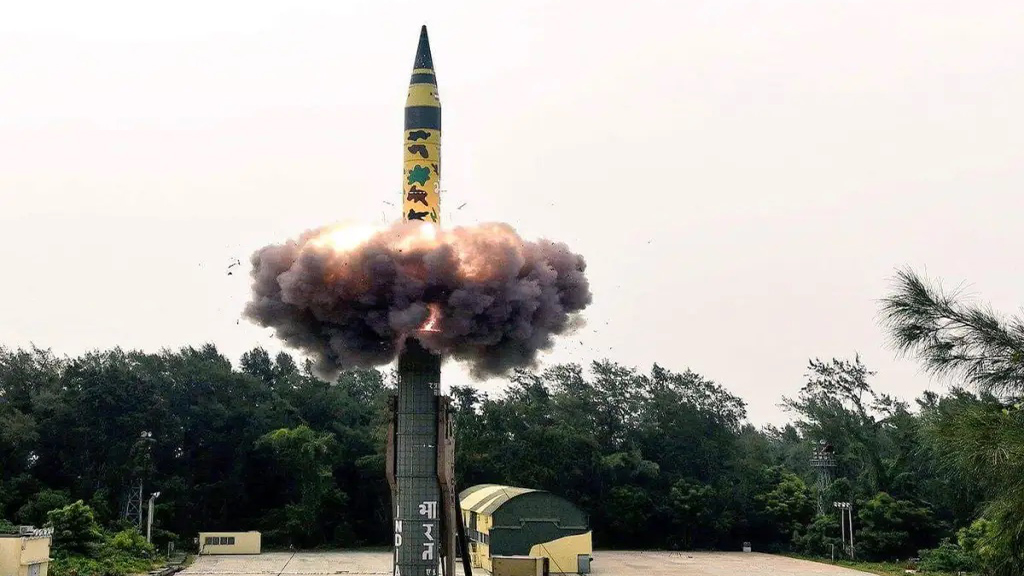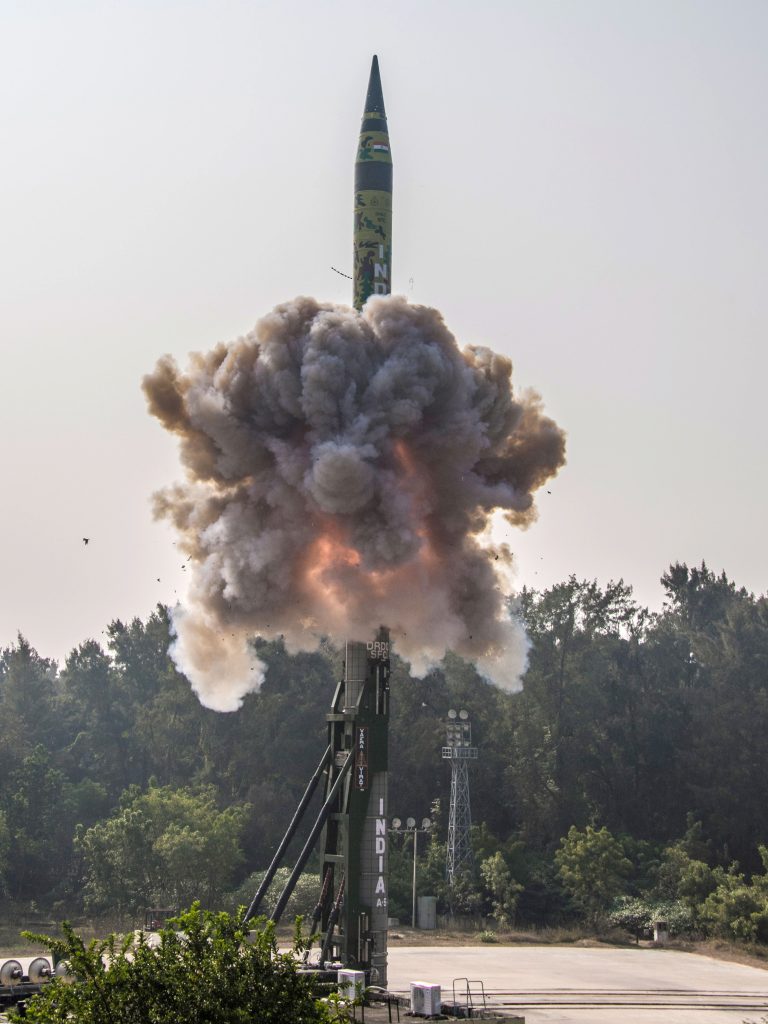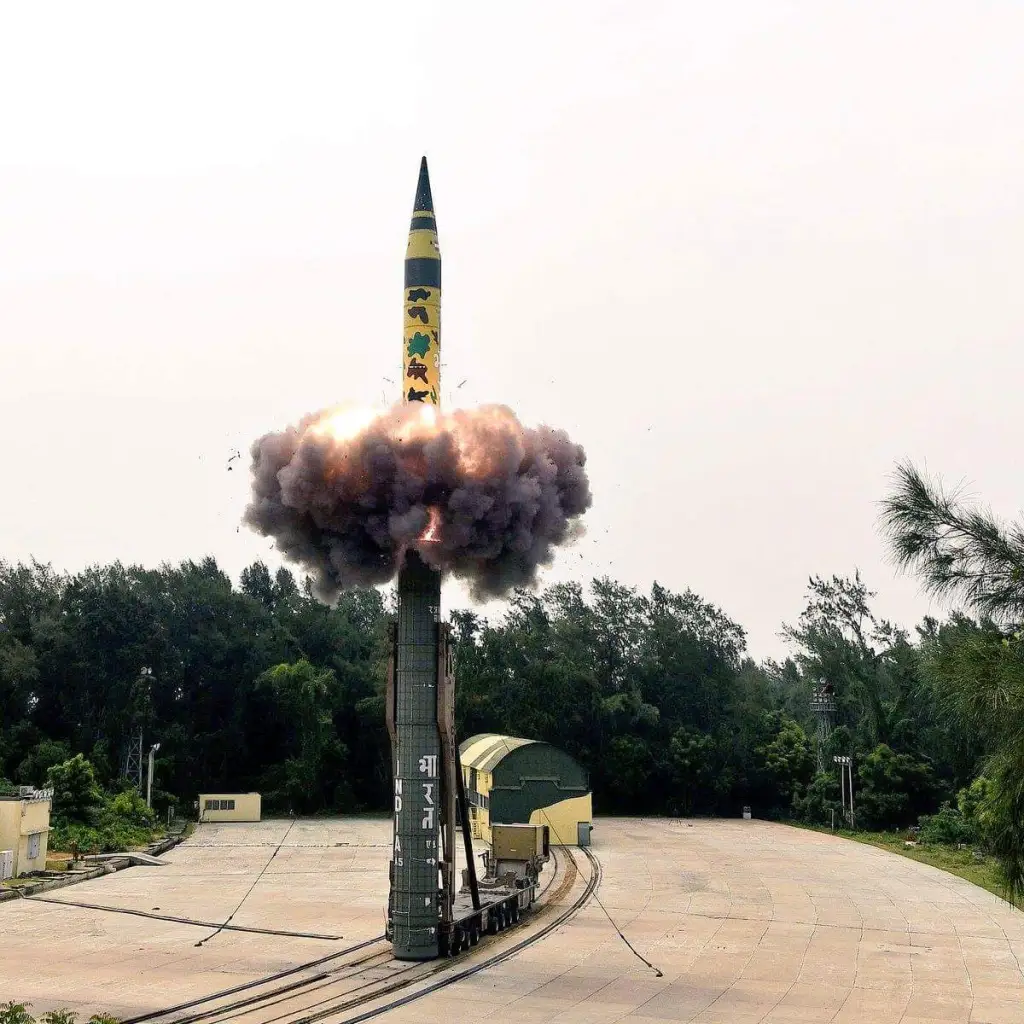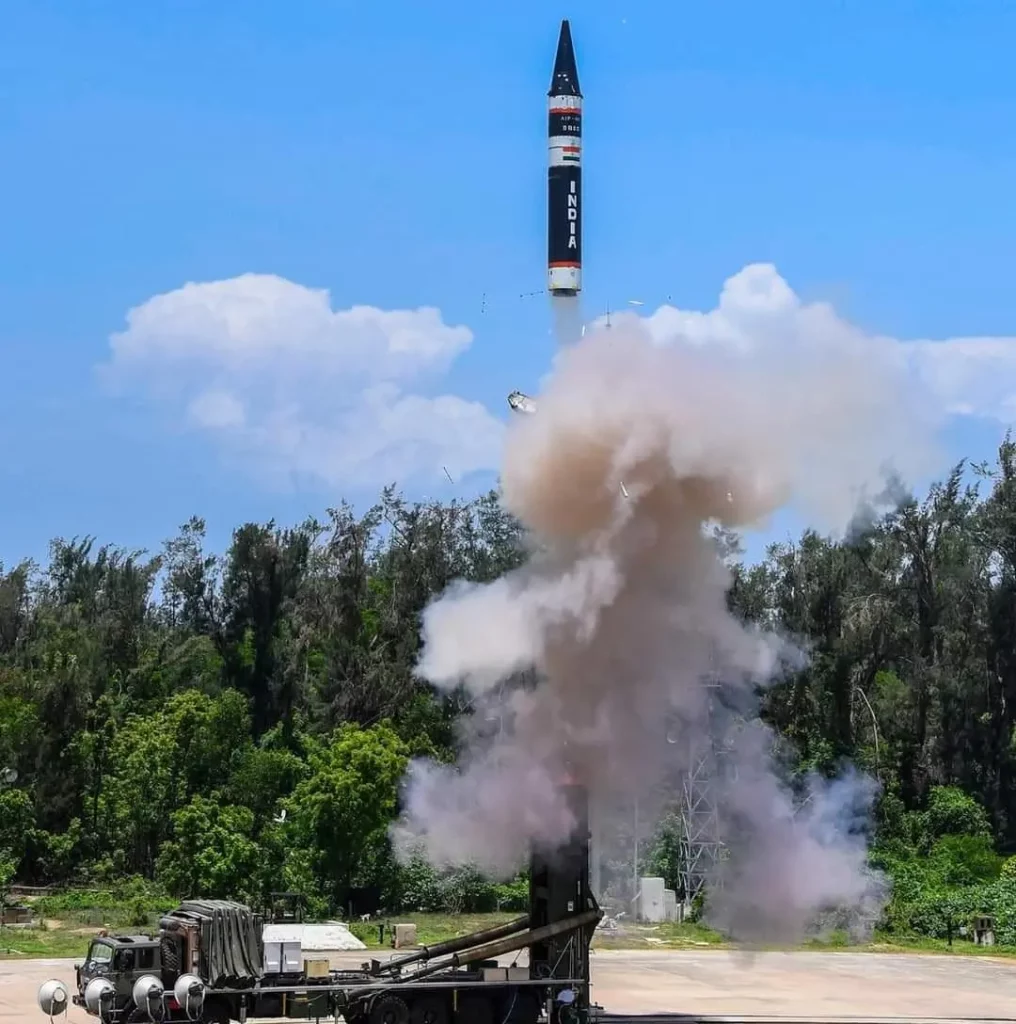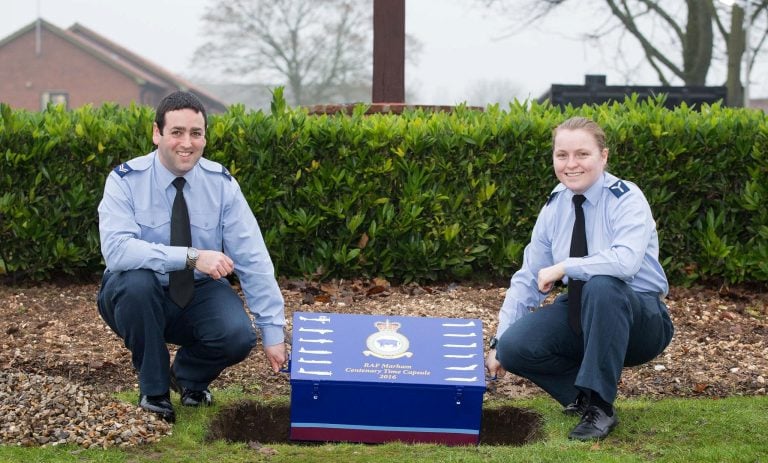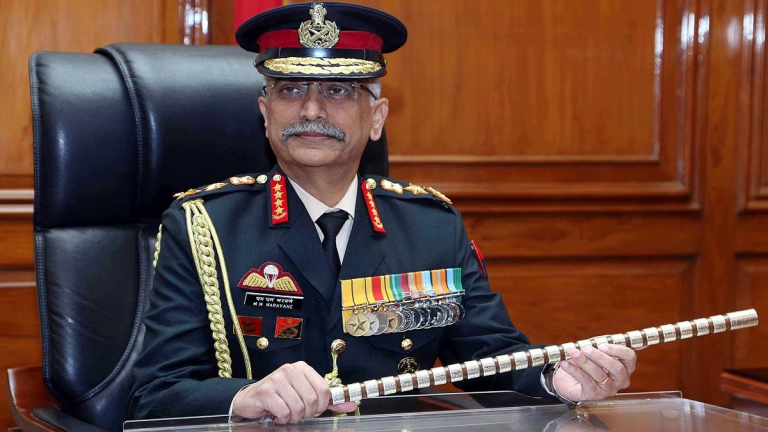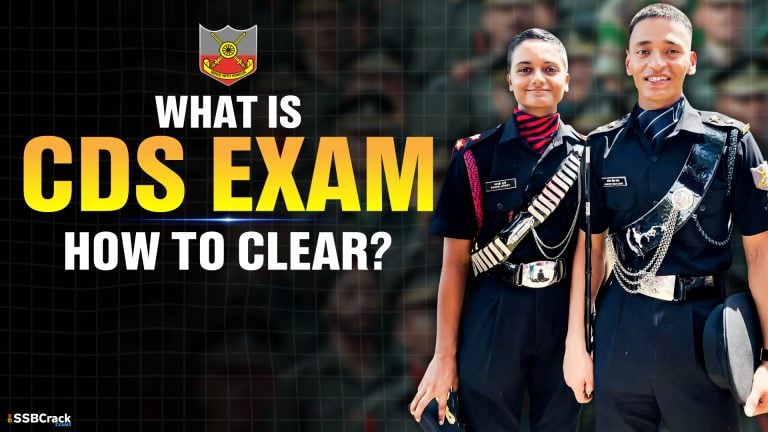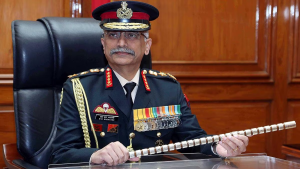Agni-VI ‘Surya’: Since its initial flight in April 2012, India’s Agni-V ICBM (Intercontinental-Range Ballistic Missile) has completed nine successful trials. India successfully conducted a night trial of the Agni-V missile from Abdul Kalam Island in Odisha on December 15, 2022. The purpose of the test was to validate new weapon technology and equipment.
The Agni-V missile became 20% lighter by replacing maraging steel (extremely high tensile steel) with lightweight composite materials. The launch also demonstrated a remarkable capacity beyond 7,000 kilometres. However, due to Agni-V’s inadequate payload carrying capacity of 1.5 tonnes, an effective Indian credible nuclear deterrence against China remains unfulfilled. In many ways, India’s integrated guided missile development programme must go above and beyond.
Meanwhile, Indian scientists and engineers are working on a satellite launch vehicle (SLV) called ‘DRDO Veda’ (Vehicle for Defence Application). All three wings of the Indian armed forces will be able to launch military satellites into low earth orbit on short notice utilising DRDO Veda, considerably reducing their dependency on ISRO and boosting their self-reliance goals.
DRDO Veda will also use horizontal stacking of stages and payloads to assemble the launch vehicle prior to launch, which is different from the vertical stacking process used by ISRO’s SSLV rocket. The vehicle will be highly nimble and mobile, and it will be able to launch itself from a multi-axle TEL (Transporter Erector-Launcher) vehicle.
Legacy of AGNI-V
While the Agni-V nuclear-capable intercontinental ballistic missile (ICBM) has flown nine times successfully since 2012, there has been little progress on the much-anticipated Agni-VI missile project. Following Agni-V’s maiden trial on April 19, 2012, former DRDO Chairman Dr Vijay Kumar Saraswat indicated unequivocally that India had no intention of discontinuing the Agni missile programme and that more missiles in the Agni series would be developed as a follow-up to Agni-V in the future years.
Also read: Upcoming Missiles of the Indian Armed Forces: Fatal for China and Pakistan
With a 1.5-tonne nuclear payload, the Agni-V has an effective range of about 5,500 kilometres. A fundamental physics law states that the weight of a warhead and the range of a missile have an inverse relationship due to gravity and momentum.
According to this theory, the Agni-V is already a 10,000 km-class ICBM, although with a weaker warhead. This is one of the most significant gaps in India’s nuclear deterrent that the Agni-VI is designed to fill. Agni-VI is expected to have a range of 9,000 to 12,000 kilometres with a 3-tonne nuclear payload and a range of 14,000 to 16,000 kilometres with a smaller 1.5-tonne package. Agni-VI’s guidance system will include an inertial navigation system with a Ring laser gyroscope, which can be supplemented by IRNSS (Indian Regional Navigation Satellite System), as well as terminal guidance with possible radar scene correlation (this is a type of terrain contour mapping that will improve missile accuracy).
Strong Case of AGNI-VI
Pradeep Vasant Naik, the former Chief of Air Staff of the Indian Air Force and the Chairman of the Chiefs of Staff Committee argued forcefully in 2011 in favour of expanding India’s nuclear striking capabilities beyond the nearby neighbourhood. The increased range of Agni-VI will bring at least four major world power capitals inside India’s strike envelope.
A range of more than 12,000 kilometres will increase India’s flexibility, which is critical for effective deterrence, and will also allow the country to target Chinese ballistic missile submarines (SSBNs), aircraft carriers, and warships hiding as far out as the Southern Indian Ocean and Central Pacific Ocean.
AGNI-VI A Big Force Multiplier
Agni-VI is a solid-fueled multistage intercontinental ballistic missile (ICBM) capable of carrying up to ten nuclear/thermonuclear warheads in MIRV (Multiple Independent Re-entry Vehicle) and MaRV (Manoeuvrable Multiple Independent Re-entry Vehicle) variants. The rocket might also carry light decoys and chaffs (radar countermeasures) to fool even the most powerful anti-ballistic missile systems (ballistic missile defence units) and confound hostile air defences.
Because India is said to have developed a lethal arsenal of double-staged thermonuclear fusion devices and single-stage boosted-fission bombs, each MIRV warhead could have explosive yields of up to 250 kilotons, capable of wiping out entire metropolitan areas and vaporising tens of millions of people in a single strike.
Agni-VI is a four-stage composite rocket with a gross weight of up to 70 tonnes that will allow the Indian military to launch military satellites into low earth orbit (LEO) during contingencies, validating its FOBS (Fractional Orbital Bombardment System) capability. Renowned strategic specialists such as Bharat Karnad, Brahma Chellaney, and Rakesh Krishnan Simha have previously stated that India must establish a credible ICBM force in the near future.
“It is past time for India to develop true ICBMs with ranges of 12,000 kilometres or more.” The Agni-VI project should be cleared for development right away. Geopolitical pressures that a country faces are always the product of that country’s will and strategic vision. According to Bharat Karnad, Emeritus Professor for National Security Studies at the Centre for Policy Research and a well-known national security expert, “the incumbent union government must show the spine to stand up to such pressures, without which India will never be able to aspire to become a great power.”
A huge ICBM force comprised of Agni-V and Agni-VI missiles will provide the country with a very robust security shield on the strategic level battlefield and will severely dissuade big powers from attempting to Balkanize India during future conflicts. While the previous UPA-1 and UPA-2 governments were regarded as ‘pacifist’ by many policymakers, it is now time for the current NDA-3 government to demonstrate its political will by quickly approving the Agni-VI programme and testing the first prototype in the coming years, propelling India into the elite league of military superpowers such as the United States, Russia, and China. Such a capability will provide India with significant diplomatic leverage at the global level.
Doing it Smartly
A full-range Agni-VI test (over 9000 km) is likely to raise suspicions in Western media circles. The ideal approach to carry out the test is to announce the missile’s official range as up to 9000 km (tacitly noting the China factor) but fly with a 3-tonne super heavy warhead. This will completely certify the new missile’s capacity while avoiding a diplomatic squabble with the West. Furthermore, such a test will provide great political benefit to the BJP-led central government because the scientific achievement can be described to the home people as a big historical milestone (similar to the ASAT test conducted in March 2019).
To crack the SSB Interview and join the Indian Armed Forces as an Officer, You can join our SSB interview live classes batch and we recommend you to Enroll SSB INTERVIEW ONLINE COURSE. Trusted by thousands of defence aspirants.
Also read:
- All About Israel David’s Sling Air Missile Defence System
- Philippines To Buy Indo-Russia-Built BrahMos Supersonic Missile For The Second Time
- Indian Navy To Acquire US Harpoon And Russian Kalibr Missiles
- Why India Needs More Subsonic Cruise Missiles?
- Top 10 Anti-Aircraft Missile Systems In The World
- All About Israel IRON DOME Air Defence Missile System
- All About S-400 Missile System [Fully Explained]
- Why S-400 Missiles Systems Is A Game Changer For Indian Armed Forces?
- About Agni Prime- Nuclear-Capable Missile
- What Is A Missile Propulsion System And How Does It Work?
- Why Is The IAF’s Pechora Missile Called A “Stealth Killer”?

